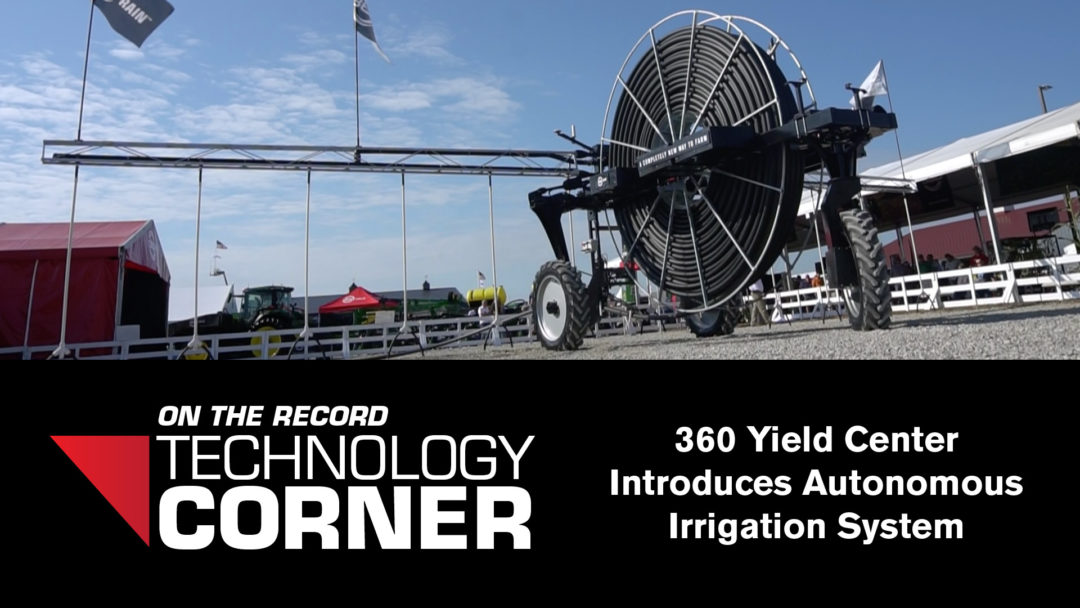Gregg Sauder, president of 360 Yield Center, demonstrated the 360 RAIN autonomous irrigation system at the 2021 Farm Progress Show in August. The technology follows an RTK path created by a planter and delivers water, nitrogen and micronutrients directly to the base of the plant.
“What we're talking about is a completely new way to farm,” Sauder says. “We're saying what if we were able to time technology to come in and water a half inch a week? And not only just add water, but add nitrogen and micronutrients. So we're really excited about this technology.
“Very simply, it follows the planter. The planter creates an RTK path, and our 360 Rain comes in and follows that path exactly. We're watering at the base of the plant. We have nitrogen pumps and micronutrient pumps soak up that water stream. And then in the future, within the next six months, we're going to be doing a manure injection in that water stream.”
The 360 RAIN machine operating at the show had 3,000 feet of hose on it, enough to cover at least a 160 acre field. Sauder said it's designed to put on a half inch of water a week at the base of the plant.
“That's totally different than the requirement that you would see through a pivot that's putting water in the air,” Sauder says, “so the fact that we're banding it next to the root, you got to take it times 2. If we're putting a half inch next to the root, once a week, that's really equivalent to an inch of water.”
360 Yield Center provides the technology to create the paths used for the map 360 RAIN follows. The equipment goes on the center of the planter, and paths are uploaded directly to 360 Yield Center’s Cloud account. The map is sent back the same day, allowing the farmer to start 360 RAIN within a day of planting.
“I want it to be that way because if rain comes in and crusts that soil surface, I want to be able to soften it with the rain unit,” Sauder says. “The GPS RTK is our own, and it's really not compatible with others in the industry for reasons. It's simple, and (we) want to be in a closed system so that we know we have the kind of path generation we need. Plenty of science has gone into all the geo-fence and safety. There are probably six different steps for safety to keep our RAIN unit in a safe position in every field.”
Sauder says there are currently 6 360 Rain Units running in Illinois. Next year, the company plans to have 10 prototypes and a beta running in fields around the country, and open sales will follow in 2023.
He sees more than just the technology as part of 360 RAIN’s future.
“We think of camera equipment that we're going to be able to add on a 360,” Sauder says. “At the speed we're going, we're going to be able to almost name every corn plant. We're going to be able to tell you if we have silk clipping, if we have gray leaf and rust on the leaf. My farm this year got tar spot — that's going to be easy to spot. And so immediately then your iPhone is going to light up, and we're going to say, we're going to need to treat, so direct inject comes in. We're going to be looking at a drop on every row. We'll have our 360 UNDERCOVER putting material from the bottom up and from the boom down. The science will be information always drives the correct decision.”
Learn more about 360 RAIN and Gregg Sauder.





Post a comment
Report Abusive Comment